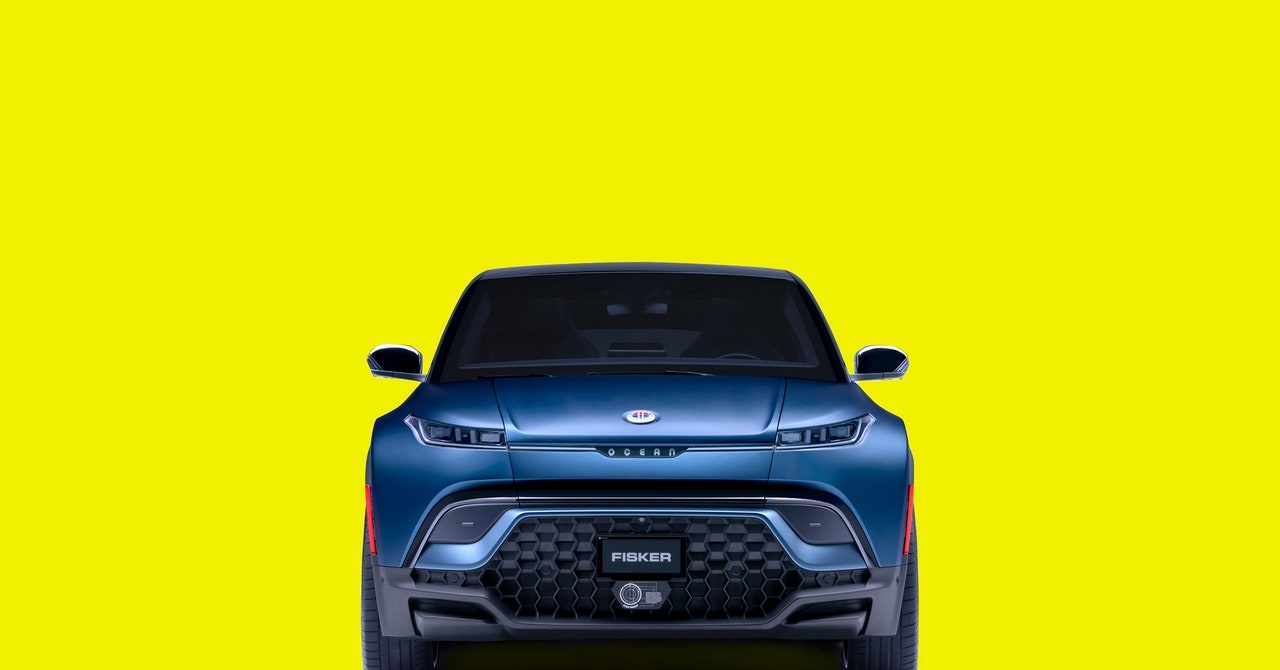There are other wonderful touches, though, such as the fold-out “taco tray” that Henrik himself insisted on adding. Again, these details will sell the Ocean. It’s immensely handy to have such features, especially in an EV where you might be spending considerable time as it charges. Hyundai knows this, too, and also made a USP of having “laptop resting space” in its Ioniq 6.
Lastly, the Fisker Ocean’s SolarSky roof option means you can harvest the sun’s rays to generate free power for the vehicle’s battery. Fisker says that when fully exposed to the sun, this can produce up to 1,500 extra miles per year, perhaps more in “ideal conditions”. The UI team are sensibly thinking of adding a live data point to the central screen showing how much power the solar roof is producing at any given moment. This is another feature that will sell the Ocean.
Driving
How the Ocean drives is perhaps the main reason why WIRED has decided not to score this EV yet. It is plenty quick in a straight line, with 0-60 mph hit in in 3.7 seconds and a peak of 564 hp in Boost mode. But how it handles the corners is not great. The softness that normally accompanies urban drive settings (the Ocean has “Earth”, “Fun”, and “Hyper” drive modes) is still there when you slip into the sportier ones, and that’s disconcerting in the bends, to say the least. As a result the car doesn’t feel particularly planted or connected to the road, either.
David King, senior VP of engineering at Fisker, tells me that a software fix for this is coming “in the next few months” where the ride will be adjusted and stiffened as modes change. If this happens as King states then the ride issues of the Ocean could potentially be solved or at least drastically improved. We’ll see.
Another issue in driving the Ocean bothered me: A squeaky acceleration pedal. Or rather a creaky one. Dabbing the power deal in an EV should bring about a silent forward motion. You should not hear a slight but definite creaking noise as springs and metal move. I thought this was just an initial audio annoyance that would go as the car went a few miles, but no. So I hopped into another Ocean on the brand-hosted media drive, and there it was again—and it was there all day. It’s the kind of noise that not only makes one wonder about build quality (such a squeak would never be allowed in a German car, for example), but also once you hear it you cannot un-hear it. These were early-build cars, however.
After a few hours of slightly spongy handling and subtly squeaking pedals, I confess I was starting to fall out of love with the Ocean, having fallen for the design before even stepping into the car. Then I tried California Mode. Dropping all the glass on a sunny day brings all the unalloyed joy one gets from a convertible car but with the added bonus that you can switch back into covered mode at any speed, at any time. Fisker, knowing this is a killer feature, has even been sensible enough to pimp the stereo system, too, provided by ELS Studio. It is not only stupidly loud but also phenomenal in sound production. Quite literally, I could not wipe the smile from my face. California Mode is glorious, and goes a long way to mitigating the EV’s failings.
Just Not There Yet
But there are failings. Not only in the handling and the driving, but also in other areas. There is no HUD, doubtless a cost-saving exercise. The laggy screen is frustrating. My left door speaker started to make a farting noise towards the end of the drive. On the day, California Mode in the first Ocean I was in wouldn’t work. The ultra-wideband key that will allow you to unlock the car with a compatible phone, or send a “key” to other phones, on more than one occasion wasn’t recognised. And a number of UI and driver assistance systems were either unfinished, being updated or yet to be added when I drove the car.
Still there is much to like. The battery performance is exceptional. A charge from 10 to 80 percent will take you just shy of 35 minutes, supposedly, and on my 205-mile, five and half hour drive I saw the battery drop from full with an estimated 440-mile range to 44 percent and 192 miles left of driving, and this was with a mixture of freeway, urban, and sporty country-road use.
With so much to like about the Ocean, and so much still to be fixed or turned on or uploaded to the vehicle, I can’t in good conscience score this EV yet. If I did so now it would score badly, but I suspect in three to six months it might do much better. So, WIRED will return to Ocean then, and hopefully Fisker will have a electric SUV that drives as good as it looks.













+ There are no comments
Add yours